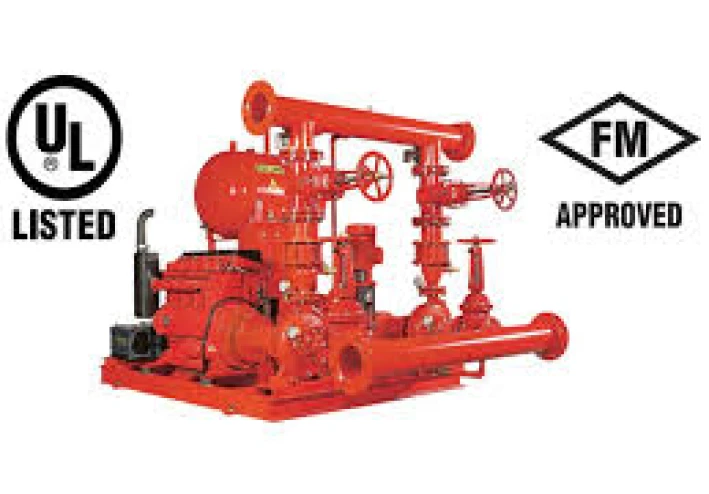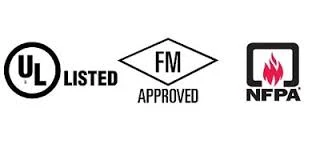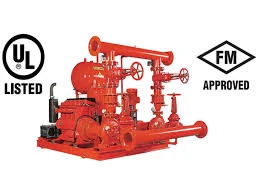A Benchmark for Quality and Safety
Fire protection and firefighting systems are among the most critical pillars of life and property safety in all types of facilities — commercial, industrial, and residential.
To ensure the reliability and effectiveness of these systems and their components, there arose a need for international certification bodies that establish strict standards for testing and evaluation.
In this context, the UL (Underwriters Laboratories) and FM (Factory Mutual) certifications have emerged as two of the most recognized and trusted marks of quality in the global fire protection industry.
🔹 1. UL (Underwriters Laboratories)
UL is an independent global safety certification organization, founded in the United States more than a century ago.
Its primary mission is to test and certify products to verify that they meet defined safety and performance standards under real-world operating conditions.
Scope of UL in Fire Protection Systems
The UL certification focuses on product safety and overall performance.
In fire protection systems, UL covers a wide range of components, including:
Fire Pumps — tested in accordance with NFPA 20 standards to ensure reliable water supply at the required pressure and flow rate.
Control Panels — tested for dependable system operation and control.
Automatic Sprinklers.
System Valves.
Fire Alarm Cables.
Fire Doors — tested for fire and smoke resistance for specified time durations.
Importance of UL Certification
A product bearing the UL Listed mark indicates that it has been designed and manufactured according to the highest international standards of safety and performance, minimizing the risk of malfunction or failure during emergencies.
🔹 2. FM (Factory Mutual)
FM Approvals is the testing and certification arm of FM Global, a leading international insurance company specializing in property loss prevention.
FM standards focus primarily on the product’s ability to protect valuable assets and reduce potential fire-related damages.
Scope of FM in Fire Protection Systems
The FM Approved certification is granted to products that pass rigorous testing to ensure reliable performance under critical conditions.
FM’s testing approach emphasizes real-world loss scenarios to evaluate the product’s effectiveness. Certified products include:
Fire Pumps.
Sprinkler Systems and Components.
Fire Detection and Alarm Systems.
Fire-Resistant Building Materials.
Special Extinguishing Agents.
Importance of FM Certification
The FM mark guarantees that a product will effectively contribute to preventing or minimizing fire-related losses.
Insurance companies — especially those covering industrial and large commercial facilities — often require the use of FM Approved equipment as part of their underwriting standards to reduce risk exposure.
🔹 UL/FM Dual Certification — The Ultimate Reliability Standard
Many fire protection products, particularly fire pumps, carry both UL and FM certifications.
This combination represents the highest level of quality and reliability, ensuring that the product meets:
The safety and performance requirements of UL.
The loss prevention and risk reduction criteria of FM.
📊 Comparison Between UL and FM
| Aspect | UL (Underwriters Laboratories) | FM (Factory Mutual) |
|---|---|---|
| Primary Focus | Product safety and functional performance. | Property loss prevention. |
| Nature of Organization | Independent safety certification body. | Certification arm of an insurance organization. |
| Typical Certification | UL Listed / Recognized. | FM Approved. |
| Objective | Ensure product safety and compliance with NFPA standards. | Ensure product effectiveness in reducing fire damage and losses. |
🧩 Conclusion
The importance of UL and FM certifications in fire protection systems extends far beyond regulatory or technical compliance.
These certifications represent a strategic investment in safety, reliability, and business continuity.
Using UL/FM certified equipment enhances the efficiency of fire protection systems, improves early fire control, and protects lives and assets — ultimately contributing to lower insurance costs and long-term operational resilience.







































